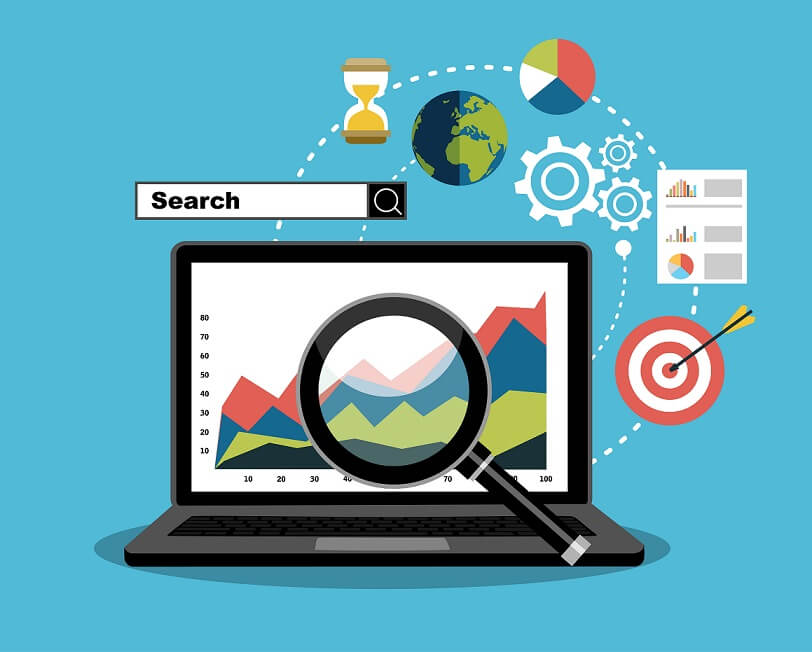The landing page isn’t just “a nice thing to have.”
It’s essential.
The landing page allows you to target specific segments of your audience. Properly assembled, a landing page can be the single element on your web presence that draws in more potential leads.
But when most people hear “landing page,” their eyes glaze over.
They don’t even hear “landing page.”
They just hear “more work.”
The good news about landing pages? They don’t have to be so difficult to assemble. They don’t have to be a major drain on your time and energy.
In fact, if you do it the right way, your landing pages will be effortless tools to draw people in and engage your audience.
Some people—particularly in the mortgage, real estate, and insurance industries—just need a little motivational boost to get started.
That’s why I’ve compiled a list of the reasons landing pages can be such a boon for your web presence. Here’s what you’ll need to know:
Reason #1: Landing Pages are Easy to Test
I know, I know—testing isn’t the sexiest marketing term out there.
But you know what is sexy? Results.
A/B testing across multiple landing pages means gaining all sorts of insights into what works best for your web presence and your company.
For instance, do you know which headline on your landing page will draw the most potential leads? Do you know what power words will have the greatest impact? Do you know what colors will make your site more effective?
If you don’t know, then it might be time to add more landing pages to your site.
Running A/B tests across multiple landing pages is a surefire way to give yourself the kinds of key insights you otherwise would never think to examine.
And while the prospect of running multiple tests at a time might sound difficult, the software that makes this possible has never been easier to use.
If you want to test elements on your site, adding more landing pages is one of the easiest ways to do it. As long as you can drive enough traffic to your landing pages to create a meaningful sample size from which to draw your information, you’ll learn what works best for your audience—and your reward with be a web presence that constantly generates new potential leads.
Reason #2: Landing Pages Fix Your Conversion Problem
“If only I had more traffic.”
You’ll hear marketers and website owners across the world say some variant of that phrase.
If only they could have more traffic, they would make more sales. If only they could draw people in, then they would start testing their website.
Nonsense.
You don’t necessarily have a traffic problem. You may find yourself looking at a conversion problem instead.
If you have enough visitors coming through your site on a regular basis, then you likely have the potential to consistently draw in new potential leads from the same site.
You don’t need a massive following on Twitter or Facebook to make this happen, either.
You just have to be effective.
How do landing pages fix this problem? The more landing pages you have, the more you’ll be able to try things out. New tests, new ideas, new techniques.
As you get a better sense of what converts, you’ll be able to point your limited traffic to those landing pages that do convert—and delete those that don’t.
That’s how more landing pages can fix your conversion problem—not your traffic problem.
Reason #3: Landing Pages Help You Target Specific Market Segments
Think about the most recent ad that worked on you.
It likely wasn’t an ad out of the blue—something that you absolutely hadn’t considered before.
In all likelihood, it was an ad for something you already wanted. Or, just as likely, it was an ad for something that someone like you would generally want.
You were part of the market segment for this ad. It did its job by identifying how to find people like you and deliver its message.
Consider just how different television commercials can appear when you watch a round of golf. Rather than seeing ads for snacks and soft drinks, you’re more likely to see ads for luxury brands—cars, watches, and the like.
These companies know their market segment. They know that people who tend to watch golf online are people who tend to be more affluent.
This is just an example. But the underlying principle is key here:
You need to be able to tailor your message to specific market segments.
Landing pages allow you to do that even when you’re selling the same basic service.
For example, let’s say that you’re in the mortgage business. Your simple task? To get people to think about mortgages.
But you might construct different landing pages based on the different people who are interested in mortgages.
For example, some people might be looking for their retirement home. What kind of landing page would appeal to them? What key points should you emphasize when selling them on your services?
Another potential lead might be a newly married couple looking to get started on their first mortgage. What’s appealing to them? They likely have an entirely different set of priorities and values.
An ad—or a landing page—never truly speaks to the individual unless it can narrow its focus.
That focus is what will help your landing page to resonate with a specific potential lead. They’ll feel that it was “written for them.”
This isn’t a trick.
A landing page specifically targeted to a market segment really was written for them.
Sound like a lot of work? In many cases, it’s easy to customize a landing page so that it targets a specific market segment. Even a few tweaks can change things up.
Reason #4: Landing Pages Give You Insights for the Rest of Your Web Presence
Whether it comes through testing or simply figuring out which landing page elements work best for you, you’ll eventually come to realize one thing:
Something that’s effective on a landing page can be effective across your entire web presence.
For example, as you try different landing pages, not only will you become more effective at creating these landing pages, but you’ll start to understand what works for web copy as a whole.
This allows you to speak to your potential leads even on your “main” pages—Home, About Us, Contact Us, etc.
The end result? A web presence that’s more alive, more energetic, and more capable of handling the traffic you receive and turning it into conversions.
If you want to make sure this happens for you, the first place to start is by adding new landing pages.
Testing those landing pages will be a great start as well. And incorporating different elements across multiple landing pages will give you the insights you’re after.
What you need to make it all happen is an infrastructure in place.
If you want to try it out for yourself, it’s available. Simply get started on a free trial of leadPops to get a sense of how this new web presence might look. Eventually, you’ll come to realize just how powerful landing pages can be for your marketing and business.








